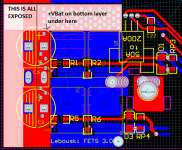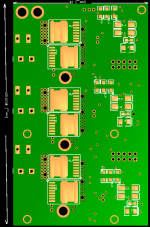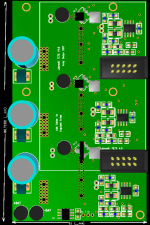Animalector
10 kW
Quick update, Temp sensor will go on top of the PCB at Phase C, I will only place one as all phases will be similar and that's less traces running across the board picking up noise.
I have made the board wider 69.5mm and will incorporate the Driver stage on the right side of this board, so this will become a two-stack controller (driver and powerstage on the lower board, CPU on the upper, connection will be the same as before with 10-pin headers.

I have made the board wider 69.5mm and will incorporate the Driver stage on the right side of this board, so this will become a two-stack controller (driver and powerstage on the lower board, CPU on the upper, connection will be the same as before with 10-pin headers.






